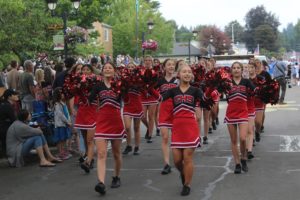How about those roundabouts?
Since the four roundabouts were completed in Camas and Washougal, two at Union Street and two at Second Avenue, drivers have been adjusting to navigating the area in a whole new way. And the transition hasn’t always been easy.
At times, motorists have reported ending up angry and frustrated when trying to figure out the rules of the road when it comes to the circular intersections. Some people just aren’t sure when to stop, when to yield, and when to proceed.
Here’s what WSDOT has to say about the “rules of roundabouts:”
• Approaching a roundabout, drivers will see a yellow “roundabout ahead” sign with an advisory speed limit for the roundabout. Slow down when approaching the roundabout, and watch for pedestrians in the crosswalk. Continue toward the roundabout and look to the left when nearing the yield sign and dashed yield line at the entrance to the roundabout. Yield to traffic already in the roundabout.
• Once there is a gap in traffic, enter the circle and proceed to the exit. If there is no traffic in the roundabout, motorists may enter without yielding.
• Look for pedestrians and use turn signals before exiting.
In the end, roundabouts are designed to make roadways safer and easier to navigate.
WSDOT spokeswoman Abbi Russell said if there are accidents at roundabout intersections, they are generally less severe than collisions at traditional four-way intersections.

